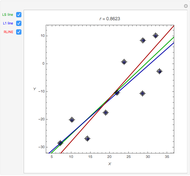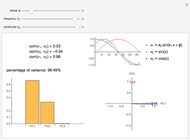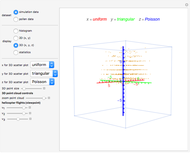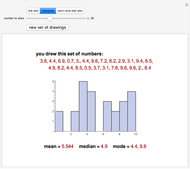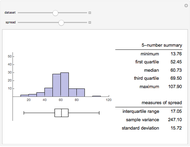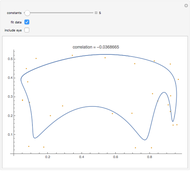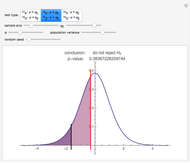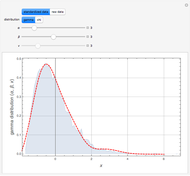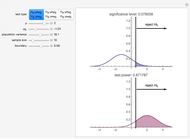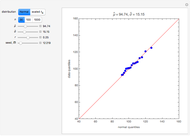Exploring Skewness in Box Plots

Requires a Wolfram Notebook System
Interact on desktop, mobile and cloud with the free Wolfram Player or other Wolfram Language products.
The box-and-whisker plot, also known simply as the box plot, is useful in visualizing skewness or lack thereof in data. The usual form of the box plot, shown in the graphic, shows the 25% and 75% quartiles,  and
and  , at the bottom and top of the box, respectively. The median,
, at the bottom and top of the box, respectively. The median,  , is shown by the horizontal line drawn through the box. The whiskers extend out to the extremes. For brevity, the whiskers at the top and bottom are referred to as the positive and negative whiskers.
, is shown by the horizontal line drawn through the box. The whiskers extend out to the extremes. For brevity, the whiskers at the top and bottom are referred to as the positive and negative whiskers.
Contributed by: Ian McLeod (March 2011)
Open content licensed under CC BY-NC-SA
Snapshots
Details
A beta distribution with parameters (0.3, 0.8) is used for the case of positive skewness and (0.8, 0.3) in the negative case. The skewness coefficient is ±0.95. All data is scaled so the distribution mean and standard deviation are 100 and 15, respectively. In the symmetric case, the normal distribution is used.
In the present simulations, the quartile skewness is not as reliable as the usual skewness coefficient. This is to be expected when the third moment exists. With financial data, infinite variance distributions are sometimes used [1] and in this case the quartile skewness may be expected to provide a more reliable estimate.
[1] J.-W. Lin and A. I. McLeod, "Portmanteau Tests for ARMA Models with Infinite Variance," Journal of Time Series Analysis, 29(3), 2008 pp. 600–617.
Permanent Citation














